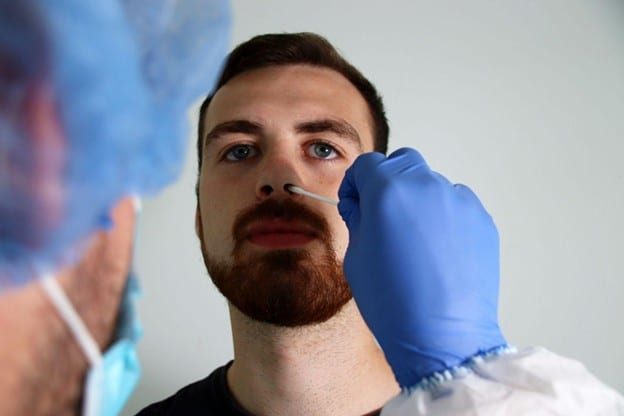Online vs In-Person Research Studies: What’s Better for You?

When considering joining a research study, one of the most important decisions is choosing between an online study or an in-person study. Each has distinct advantages depending on your lifestyle, schedule, comfort with technology, and willingness to travel.
Whether you’re interested in earning extra income, contributing to medical advancements, or simply helping improve consumer products, understanding the differences between these study formats is key.
In this article, we’ll dive deep into the structure, experience, benefits, limitations, and compensation associated with both types of research studies—so you can confidently choose what’s best for you.
Key Takeaways
- Online studies offer flexibility, low barriers to entry, and can be done from anywhere with an internet connection.
- In-person studies often pay more and allow researchers to collect richer, more complex data through direct interaction.
- Study compensation depends on study duration, complexity, and risk level—not just whether it’s remote or in-person.
- Both formats require strict ethical oversight and participant data protection, but their methods differ.
- Consider your schedule, goals, and comfort level with technology or travel when choosing a study format.
What Are Online and In-Person Research Studies?
Research studies are essential tools used by universities, hospitals, government agencies, and private companies to gather information, test new ideas, evaluate products, and advance scientific understanding. These studies are designed to observe human behavior, test interventions, collect feedback, or measure the effectiveness of treatments and technologies.
Depending on the study’s goals, researchers choose between two primary formats: online research studies and in-person research studies. Both formats offer unique opportunities and experiences for participants, but they differ in how data is collected, where participation takes place, and what is required of you.
What Are Online Research Studies?
Online research studies are conducted remotely—typically over the internet—allowing participants to contribute from the comfort of their own homes. This format has become increasingly popular due to advancements in digital technology and the widespread use of smartphones, laptops, and high-speed internet. Online studies are ideal for tasks that don’t require physical presence or specialized equipment.
Common characteristics of online studies:
- No need to travel or attend in-person sessions.
- Tasks are completed using digital platforms or mobile apps.
- Communication with researchers is often asynchronous (via email or survey tools) or conducted over video calls.
- Ideal for quick surveys, behavioral experiments, user experience testing, and observational diary studies.
Examples of online research tasks:
- Completing personality or psychology surveys.
- Participating in a recorded Zoom interview about shopping habits.
- Logging daily food intake in a mobile app for a nutrition study.
- Testing a beta version of a new website and providing usability feedback.
These studies can be as short as five minutes or span several weeks, especially if part of a longitudinal study that tracks behaviors over time. Some require no more than a few clicks; others involve regular participation and detailed feedback.
Popular online research platforms include:
- Prolific (academic and psychology studies)
- User Interviews (consumer insights and B2B feedback)
- Respondent.io (high-paying remote interviews)
- CloudResearch (Amazon Mechanical Turk for vetted academic tasks)
- Dscout (video-based diary studies)
Because of their convenience and accessibility, online studies are an excellent fit for students, parents, caregivers, full-time workers, and people with limited mobility.
What Are In-Person Research Studies?
In-person research studies are conducted at a physical location such as a university laboratory, medical facility, research center, or market testing site. These studies require participants to travel to the research site and often involve hands-on activities, controlled environments, or the use of specialized equipment.
In-person studies are preferred when researchers need to:
- Measure physiological responses (heart rate, brain activity, blood samples).
- Conduct interviews in a distraction-free environment.
- Observe behavior in real-time (e.g., focus groups, product testing).
- Administer treatments or interventions that require close monitoring.
In-person studies are often conducted by:
- University research labs
- Hospitals and clinical research organizations (CROs)
- Government agencies (e.g., NIH, CDC)
- Consumer goods companies and market research firms
Participants in in-person studies are typically compensated more than those in online studies due to the added time, travel, and commitment involved. Additionally, some medical studies offer free health assessments or access to new treatments as part of participation.
Comparing Online vs In-Person Research Studies
| Feature | Online Studies | In-Person Studies |
| Location | Remote (home or anywhere) | Physical site (lab, hospital, office) |
| Time Flexibility | High – often self-paced | Fixed appointments required |
| Interaction Type | Email, chat, or video-based | Face-to-face with researchers |
| Data Collected | Surveys, digital behavior, video/audio | Observational, biometric, physical responses |
| Equipment Needed | Personal device with internet | Provided on-site (e.g., medical or lab equipment) |
| Compensation | Typically lower | Often higher due to time and travel |
Whether online or in-person, both types of research studies are designed to gather meaningful insights while protecting participants through ethical standards and privacy safeguards. Your choice depends on your availability, comfort level, and the kind of research you’d like to support.
Key Differences Between Online and In-Person Research Participation
| Category | Online Research Studies | In-Person Research Studies |
| Location & Setting | Conducted remotely—participants can join from home or any quiet environment with the internet. | Conducted at a designated physical location such as a lab, clinic, or research facility. |
| Time Flexibility | Highly flexible—many studies allow participants to complete tasks at their convenience. | Fixed scheduling—participants must attend sessions at set times, sometimes over multiple days. |
| Technology Requirements | Requires access to a device (laptop, tablet, or smartphone) and stable internet. | No personal tech required—researchers provide tools, but participants must travel. |
| Supervision & Interaction | Minimal real-time interaction—guidance is often via email, chat, or prerecorded video. | Direct researcher oversight—participants receive in-person instructions and feedback. |
| Task Types | Surveys, video calls, digital tracking, usability testing, reaction-time tasks. | Medical exams, biometric readings, focus groups, interviews, lab-based cognitive tasks. |
| Data Collection Methods | Self-reported answers, screen recordings, webcam data, online behavior logs. | Observational data, biometric data, sensor recordings, real-time reactions. |
| Level of Control | Low control—researchers can’t verify the environment or attention levels of participants. | High control—researchers manage noise, lighting, distractions, and equipment settings. |
| Accessibility | Inclusive for rural residents, people with mobility issues, or those without transport. | Restricted to those within traveling distance of the research site. |
| Risk Level | Typically low-risk—rarely involves physical intervention or medical procedures. | May involve medical procedures, physical exertion, or exposure to new treatments. |
| Eligibility Requirements | Often broad and inclusive—screening questions filter participants. | May involve health screenings, background checks, or specific demographic criteria. |
| Compensation Range | Usually lower due to lower time/effort (e.g., $5–$50 per task). | Generally higher due to time, travel, and complexity (e.g., $50–$1000+). |
| Privacy & Data Security | Depends on platform—secure studies use encrypted systems and anonymized data. | Typically more secure—controlled environments, signed consent forms, and institutional oversight. |
| Commitment Level | Usually minimal—can join or exit freely, sometimes instantly. | Often requires sustained commitment or return visits, especially for clinical trials. |
| Common Platforms | Prolific, MTurk, Respondent, UserTesting, CloudResearch. | Hosted by universities, hospitals, research labs, and private research firms. |
| Best For | Quick, low-effort studies; people with busy or inflexible schedules. | High-paying, involved studies; people seeking direct engagement or hands-on experience. |
Pros and Cons of Online Research Studies
Online research studies are increasingly popular due to their accessibility and convenience. Whether you’re participating in a 10-minute survey or a multi-week behavioral study, the online format offers unique advantages—but also comes with certain limitations.
Advantages of Online Research Studies
1. Convenience and Flexibility
- Participate from your home, office, or anywhere with internet access.
- No need to commute, book appointments, or rearrange your day.
- Many tasks are asynchronous—you can complete them at any time.
Example: A university might ask you to log your sleep habits in an app each night, which you can do on your own schedule.
2. Wider Accessibility
- Great for people with physical disabilities, chronic illnesses, or mobility limitations.
- Includes participants in rural or remote areas who otherwise lack access to research sites.
- Suitable for parents, students, full-time workers, and others with limited availability.
3. Lower Barrier to Entry
- Often no health screenings or demographic restrictions.
- Quick and easy onboarding—most platforms require only an email and basic profile.
- Tasks typically require no special equipment beyond a phone or computer.
4. Global Participation
- Allows researchers to access a diverse, international participant pool.
- Participants can take part in studies hosted by institutions from different countries.
5. Faster Payment Turnaround
- Many platforms offer digital compensation via PayPal, direct deposit, or gift cards within days—sometimes within hours.
Disadvantages of Online Research Studies
1. Technical Issues
- Unstable internet, outdated browsers, or device limitations can prevent you from completing a study.
- Browser incompatibility or platform glitches can lead to missed opportunities or disqualification.
Example: A poorly optimized survey may not load correctly on mobile, preventing participation.
2. Limited Researcher Supervision
- Without live interaction, you may misunderstand instructions or perform tasks incorrectly.
- Lack of real-time guidance can impact data quality.
Tip: Always read task instructions carefully and contact the researcher if clarification is needed.
3. Less Rich Data Collection
- Researchers can’t observe body language, tone of voice, or physical responses.
- Studies relying on facial expressions, physiological feedback, or environment control are difficult to conduct remotely.
4. Lower Compensation
- Because they’re simpler and require less time, online studies usually pay less than in-person ones.
- Some quick tasks (especially on crowd-sourced platforms like MTurk) may pay under $1.
5. Data Privacy Risks (If Not Carefully Vetted)
- If a study isn’t hosted on a reputable platform, your personal data may be vulnerable.
- Some platforms collect metadata, such as location or browsing history, without clear disclosure.
Advice: Stick to well-known, IRB-approved platforms, and always review privacy policies before participating.
| Pros | Cons |
| Flexible scheduling—complete tasks anytime | Tech issues can prevent participation or cause disqualification |
| No travel required—participate from anywhere | Less supervision can lead to user error |
| Accessible to a wide range of people | Limited ability to gather in-depth behavioral data |
| Fast and easy onboarding | Lower pay for shorter or simpler tasks |
| Payment often delivered quickly and electronically | Potential privacy concerns with poorly managed platforms |
Pros and Cons of In-Person Research Studies
In-person research studies offer a more immersive and hands-on experience for participants. While they often require a greater time commitment and travel, they also provide access to advanced research tools, higher compensation, and direct interaction with professional researchers.
Advantages of In-Person Research Studies
1. Higher Compensation
- In-person studies typically pay more than online studies due to their complexity and time requirements.
- Participants may also receive stipends for travel, meals, or accommodations for overnight sessions.
Example: A medical study requiring four lab visits over a month might pay $750–$1,200 depending on the procedures involved.
2. Hands-On Participation
- Direct involvement in study activities such as lab experiments, medical tests, or product evaluations.
- Use of specialized equipment not available in remote settings (e.g., EEG machines, fMRI scanners, biometric sensors).
Example: A cognitive neuroscience study might involve wearing a brainwave-monitoring cap while completing memory tasks.
3. Researcher Supervision and Real-Time Support
- Researchers guide you through procedures and answer questions in real time.
- Ensures that tasks are performed correctly and consistently, improving data quality.
Benefit: Participants are less likely to misinterpret instructions or skip critical steps.
4. Access to Experimental Treatments or Technologies
- Clinical trials often offer early access to new medications, therapies, or medical devices.
- Participants may benefit from close health monitoring or wellness insights during the study.
Note: While access does not replace professional care, it may provide valuable information or alternatives.
5. In-Depth Engagement
- Richer interaction often leads to greater understanding of the study’s purpose and impact.
- Some participants find the experience personally rewarding or intellectually stimulating.
Disadvantages of In-Person Research Studies
1. Requires Travel and Time Commitment
- You must commute to a specific location, which can be inconvenient or costly.
- Sessions may last several hours or involve multiple visits over days or weeks.
Example: A 90-minute focus group plus round-trip travel may take up half a day.
2. Less Schedule Flexibility
- Study times are usually fixed—you must arrive at specific times or risk being disqualified.
- Rescheduling options may be limited or unavailable, especially in medical studies.
Challenge: This can be difficult for caregivers, students, or people with full-time jobs.
3. Possible Physical or Health Risks
- Clinical trials or physical tasks may carry risks such as side effects, discomfort, or fatigue.
- Informed consent must explain all risks, but it’s important to assess your own comfort level.
Important: Always read the consent form carefully and ask questions before agreeing.
4. Eligibility Barriers
- Some studies have strict inclusion criteria based on age, health, location, or lifestyle.
- You may need to undergo medical screenings or background checks.
Note: Failing pre-screening does not mean you’re ineligible for all future studies.
5. Privacy Concerns in Shared Spaces
- Unlike online studies, you may be seen or overheard by others in focus groups or waiting rooms.
- While confidentiality is enforced, the environment is less private than your own home.
| Pros | Cons |
| Higher compensation for time and effort | Requires travel and more time commitment |
| Hands-on experience with real equipment or products | Less flexibility—sessions are scheduled and fixed |
| Real-time guidance from trained researchers | May involve physical or medical risks depending on study type |
| Opportunity to access experimental treatments or devices | Eligibility criteria can be strict or limiting |
| More engaging and immersive experience | Privacy may be limited in group or shared settings |
Popular Types of Research Studies in Both Formats
Research studies can take many forms, depending on the field of study, research goals, and the methods used to gather data. While some study types can be conducted in either online or in-person formats, others are better suited to one approach due to technological, ethical, or observational needs.
Below is a breakdown of the most common types of research studies, how they work, and which format they typically use.
1. Survey-Based Studies
Online: Online surveys are among the most common online research methods. Participants respond to questions through platforms like Qualtrics, SurveyMonkey, or Google Forms. These surveys may assess opinions, experiences, personality traits, purchasing behavior, or social attitudes.
Note: a meta-analysis published in Computers in Human Behavior Reports found that the average response rate for online surveys is approximately 44.1%.
In-Person: While less common today, in-person surveys are still used in environments like shopping malls, clinics, or university campuses—especially when researchers want to observe facial expressions or body language during responses.
2. Behavioral Psychology Experiments
Online: Often involve tasks that assess memory, attention, problem-solving, or decision-making. These may use visual stimuli, reaction time games, or hypothetical scenarios. Notably, a study in the Journal of Memory and Language found that over 20% of online behavioral experiments experience dropout rates exceeding 30%, highlighting the challenges of participant retention in virtual settings.
In-Person: Allows researchers to collect additional metrics like eye movement, heart rate, or facial muscle activity. Tasks may be more complex and controlled in lab settings.
3. Focus Groups and Interviews
Online: Conducted via Zoom, Microsoft Teams, or platforms like Respondent.io. Useful for gathering qualitative data from participants in different locations.
In-Person: Facilitated in a controlled environment with group interaction and researcher observation. Body language and group dynamics are easier to monitor.
4. Usability and UX Testing
Online: Participants test websites, software, or mobile apps and provide feedback. Screen recordings and think-aloud protocols are often used.
In-Person: Enables researchers to observe how participants physically interact with devices or products. Eye-tracking and facial recognition tools may be used.
5. Clinical and Medical Trials
Online: Used for symptom tracking, virtual consultations, or app-based monitoring. Suitable for low-risk interventions or observational health studies.
In-Person: Required for drug administration, blood draws, physical exams, imaging (MRI, ECG), and interventions with safety concerns.
6. Product Testing and Consumer Studies
Online: Participants may receive products by mail and provide feedback via surveys or video. Ideal for cosmetics, supplements, or subscription services.
In-Person: Allows for real-time observation during usage, taste tests, or live demonstrations. Controlled testing environments increase accuracy.
7. Longitudinal Studies
Online: Conducted via regular check-ins, digital diaries, or app usage over weeks or months. Suitable for tracking behavior or mood trends.
In-Person: Often combined with regular clinical visits or lab assessments. Researchers may collect physiological data over time.
8. Educational and Learning Studies
Online: Involve e-learning modules, assessments, and cognitive tasks done remotely. Useful for evaluating digital education tools.
In-Person: Used in classrooms or labs to observe learning behavior, tutor-student interactions, or hands-on experiments.
| Study Type | Best for Online | Best for In-Person |
| Surveys | Easy to distribute and scale | When real-time observation is needed |
| Behavioral Experiments | Simple cognitive tasks | Complex tasks with biometric tracking |
| Focus Groups & Interviews | Cross-location discussions | Observing group dynamics and non-verbal cues |
| UX/Product Testing | App and website usability testing | Hands-on product demos and facial reactions |
| Clinical Trials | Symptom logging, remote monitoring | Drug trials, physical exams, sample collection |
| Consumer Research | Mail-based testing and remote feedback | Taste tests and live demonstrations |
| Longitudinal Studies | App-based journaling, remote tracking | Periodic lab visits for health metrics |
| Educational Studies | E-learning or virtual simulations | Group collaboration or lab experiments |
Which Type Pays More: Online or In-Person Studies?
When considering participating in research studies, compensation is often a key factor. Both online and in-person studies can offer monetary rewards or other incentives, but the amount you earn depends on several factors—such as study length, complexity, level of risk, and the institution funding the research.
Let’s break down how compensation typically works across formats, and which is likely to pay more.
Typical Payment Structures
Online Research Studies
Online studies generally pay less per session compared to in-person studies, but they offer greater volume and flexibility. You can often complete multiple short tasks in a day, especially if you’re using crowd-based platforms or research marketplaces.
Typical rates:
- Short surveys (5–15 mins): $1–$5
- Cognitive/psychology tasks (30–60 mins): $8–$12
- Online focus groups or interviews (45–90 mins): $75–$150
- Longitudinal app tracking (1–2 weeks): $20–$40
Platforms known for high-paying online studies:
In-Person Research Studies
In-person studies typically offer higher compensation, especially when medical procedures, long sessions, or physical tasks are involved. These studies demand more of your time and presence, so the pay reflects the added effort and logistics.
Typical rates:
- In-person focus groups (1–2 hours): $75–$250
- Clinical trials (1 day to several weeks): $200 – $5,000+
- Lab-based cognitive studies (EEG, MRI): $50–$300
- Taste testing/product evaluation: $40–$100/session
- Overnight stays or long commitments: $1,000–$10,000+ depending on risk
Factors That Influence Payment Amounts
- Study type: Medical studies generally pay more than consumer surveys.
- Time commitment: Multi-hour or multi-day studies pay more than 10-minute tasks.
- Risk: Taking experimental drugs comes with higher pay due to potential side effects.
- Scarcity: Niche demographics or rare health conditions are often compensated at a premium.
Many studies also offer non-cash incentives like gift cards, course credit (for students), or access to new technologies or treatments.
Privacy and Data Security: How They Compare
Data Protection in Online Studies
- Secure platforms use SSL encryption and GDPR-compliant data storage.
- Some studies anonymize responses; others link them to participant IDs.
- Reputable platforms (like Prolific) conduct regular security audits.
Risks:
- Poorly managed studies might sell data to third parties.
- Using untrusted public Wi-Fi can expose sensitive info.
- Always read privacy policies before beginning.
Confidentiality Measures in Physical Locations
- Signed non-disclosure or confidentiality agreements may be required.
- Medical records are protected by HIPAA (U.S.) or equivalent laws.
- Consent forms clearly explain how data is stored, who has access, and how it may be published (in anonymized form).
Researchers are trained to handle personal data ethically and are often bound by university or institutional review board protocols.
Ethical Considerations in Both Formats
All legitimate studies, online or in-person, must follow strict ethical guidelines, including:
- Voluntary participation: You must give informed consent freely.
- Right to withdraw: You can leave at any time without penalty.
- Transparency: The purpose, risks, and benefits should be clearly explained.
- Fair compensation: You should be paid fairly, and never coerced by overly large payments for high-risk studies.
Red flags to watch out for:
- No consent form or unclear information.
- Requests for upfront payment.
- Vague or overly general descriptions of tasks.
How to Decide Which Is Better for You
Consider Your Goals, Availability, and Comfort Level
- Do you prefer flexibility or structure?
- Are you okay with travel or health screenings?
- Do you need fast, low-effort compensation or are you willing to invest more time for greater pay?
- Are you interested in being part of healthcare innovation, or more casual product reviews?
Answering these questions can help clarify your preferred format.
Questions to Ask Before Signing Up
- Who is running this study (university, company, third-party)?
- Is the study reviewed by an IRB or ethics board?
- What’s the time commitment, and how is payment delivered?
- What happens to your data after the study ends?
- Will you receive study results or follow-up?
The Rise of Hybrid Studies
Hybrid research studies are becoming more common, blending the convenience of online participation with the rigor of in-person methods.
Common hybrid designs include:
- Screening and consent online, followed by lab-based testing.
- Remote daily journaling, then one in-person sample collection.
- Video focus groups, followed by on-site usability testing.
Hybrid studies are popular in medical research and consumer testing because they offer both scale and quality data.
Conclusion
Whether online or in-person, research studies are a valuable opportunity to contribute to science, society, and innovation—while earning some extra money or accessing new services.
Online studies are best for flexible, low-effort participation.While, in-person studies offer deeper engagement and higher compensation.
Your best option depends on your personal goals, availability, and comfort level. Whichever you choose, ensure the study is reputable, ethically reviewed, and transparent about data and payment.
Ready to get started? Join Focus Group Panel today to access paid studies tailored to your interests and schedule.
FAQs
Are online studies as legitimate as in-person ones?
Yes. Many academic and government-funded projects are now run entirely online using secure platforms.
Can I participate in both types?
Yes, and many people do. Switching between formats keeps things interesting and increases your earning potential.
Is payment faster for online or in-person studies?
Online studies often pay instantly or within 3 days. In-person may take 1–3 weeks due to institutional processing.
Do I need special equipment for online studies?
Usually, just a computer or smartphone with internet access. Some studies require a webcam or quiet environment.
Are in-person studies riskier for my health?
Some are, especially medical trials. All risks should be disclosed before you participate.
How can I avoid scams in online research?
Stick to trusted platforms. Avoid studies that ask for upfront fees or your Social Security number.
Can I participate if I’m under 18?
Yes, but only with parental or guardian consent. Many universities run child psychology or education studies.
Are there studies just for certain medical conditions?
Yes. These studies may pay more and provide new treatment options or close medical monitoring.
What happens if I withdraw midway?
You’re allowed to stop anytime. You may still be eligible for partial payment depending on study rules.
Do all studies pay in cash?
Some use gift cards, PayPal, direct deposit, or bank transfers. Always check the terms before starting.
Will I receive the study results?
Sometimes, especially with academic research. Others may not share individual outcomes for privacy reasons.





